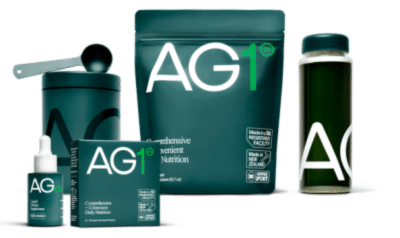Understanding Your Options and Choosing the Right Formula
Description
More than 75% of babies will get infant formula in the first year. Choosing a formula can feel overwhelming, with countless brands, ingredients, and claims competing for your attention. Find out how formulas differ in carbohydrates, proteins, and fats, and what role additives like DHA, probiotics, and nucleotides play. Learn how to identify allergies and sensitivities, and determine if your baby requires a specialized formula. Plus, shopping tips on how to read labels without getting lost in marketing buzzwords, strategies to save money, and what to do during shortages. By the end of this episode, you will have a clear framework for selecting a formula that best supports your baby’s health, your values, and your family’s budget.
Listen Now
This episode is made possible with support from our sponsors. I appreciate your support for the brands that help power this podcast.
 </figure>
</figure>10% off Oscha Slings with the code PREGNANCYPODCAST. From the newborn stage through toddlerhood, Oscha Slings are the most beautiful and comfortable solution for carrying your baby.
 </figure>
</figure>Try AG1 and get a FREE 1-year supply of immune-supporting Vitamin D AND 5 FREE AG1 travel packs with your first purchase.
Become a Pregnancy Podcast Premium member or log in to access all articles and episodes ad-free.
<form action="https://pregnancypodcast.com/login/" class="mepr-form" id="mepr_loginform" method="post" name="mepr_loginform">
<label for="user_login">Username or E-mail</label>
<input id="user_login" name="log" type="text" value="" />
<label for="user_pass">Password</label>
<input id="user_pass" name="pwd" type="password" value="" />
<button class="button mp-hide-pw hide-if-no-js" type="button">
</button>
<label><input id="rememberme" name="rememberme" type="checkbox" value="forever" /> Remember Me</label>
<input class="button-primary mepr-share-button " id="wp-submit" name="wp-submit" type="submit" value="Log In" />
<input name="redirect_to" type="hidden" value="/feed/" />
<input name="mepr_process_login_form" type="hidden" value="true" />
<input name="mepr_is_login_page" type="hidden" value="false" />
</form>
Article and Resources
I support the decisions you make for you and your baby when it comes to feeding. My goal is to provide accurate, evidence-based information and support to help you succeed. You can find all the breastfeeding and bottle-feeding resources, episodes, and articles here.
Combining Infant Formula and Breastfeeding
Breast milk provides unique nutrition and immune protection that formula cannot fully replicate. For some parents, introducing formula is a choice, and for others, it is a necessity. Using formula does not mean you need to stop breastfeeding altogether. Any amount of breast milk your baby receives is valuable, even if it is not at every feeding. Keep in mind that your milk supply depends on demand and milk removal through breastfeeding or pumping. If you replace a feeding with formula and do not pump, your supply will gradually decrease.
History of Infant Formula
The world’s first commercial infant formula was developed in 1867. Before this time, if mothers could not breastfeed their babies, they employed a wet nurse. This was someone who was producing breastmilk and breastfed another mother’s baby. While this may seem socially unacceptable now, before the invention of breast pumps, there were limited options. In the 1920s and 1930s, evaporated milk formula was available. In the 1950s, companies introduced commercial formulas, and by the early 1970s, over 75% of parents fed their babies formula. Today, the vast majority of parents use infant formula. We do not have data on the exact number of babies that get formula. We have data to show that 3 out of 4 babies drink formula by six months, and this number continues to increase.
Infant Formula as a Global Industry
The global infant formula market was valued at $81.72 billion in 2024 and is projected to more than double by 2032. Formula manufacturers have enormous budgets for lobbying and marketing. While formula is a safe and regulated option, marketing sometimes makes it difficult for parents to distinguish between evidence-based health recommendations and business incentives. Understanding this context can help you make informed feeding decisions that are right for your baby, without being swayed by advertising.
Marketing and Regulation
One factor that influences our perception of formulas is the way companies market them. In 1981, the World Health Assembly adopted the International Code of Marketing of Breast-milk Substitutes. This code establishes guidelines for how manufacturers promote formulas to support and promote breastfeeding. For example, it discourages direct advertising of formula to parents, including the distribution of free samples in hospitals, and using language that suggests formula is superior to breast milk. Many countries have adopted the code into law, but the United States has not. This means formula marketing here is largely unregulated, and companies can advertise directly to families. Aggressive marketing campaigns have played a significant role in the historical spread of formula use, often framing it as more modern or even superior to breastfeeding.
Formula Types
When it comes to choosing an infant formula, there are several options. Most formulas come in powdered form that you mix with water. There are also ready-to-feed formulas that you can pour directly into a bottle, as well as liquid concentrate formulas that require dilution before use. Each type has pros and cons. Powder is the most affordable and widely available, while ready-to-feed is the most convenient but also the most expensive. Concentrate falls somewhere in between. Regardless of the type you use, it is crucial to follow the instructions on the package carefully and never add extra water, as this can dilute nutrients and be unsafe for your baby.
Homemade Formulas
Making your own formula at home is not recommended. Manufacturers carefully develop infant formula with precise quantities of dozens of nutrients to meet your baby’s needs. It would be nearly impossible to include all the right ingredients in the right amounts in a homemade version. Do not add extra ingredients to a commercial formula unless your pediatrician specifically recommends it. This includes additives like vitamins, cereal, fatty acids, oils, or animal milk. The safest option is to use formula exactly as it is manufactured and follow the instructions on the package.
Formula Ingredients and Nutrition
Since the inception of infant formula, manufacturers have heavily invested capital and resources to mimic breast milk as closely as possible. All the ingredients that go into formula are, in one way or another, mimicking what is actually in breastmilk, but they are not identical. The fo





